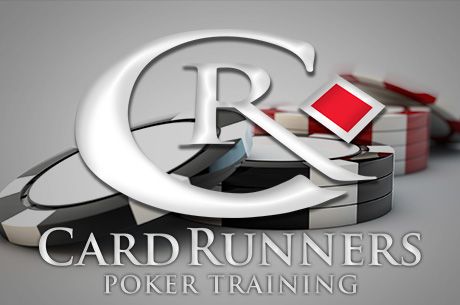Talking Poker: Implied Odds

Each week, the Talking Poker series highlights a particular poker term. We’ll give you a clear, to-the-point definition of the term and an example of the strategic concept to which it refers, so that you can start using the term and implementing the related strategy into your game. This week we’re focusing on implied odds.
Definition
Implied odds are the odds you are getting after the assumed result of betting for the remainder of the hand.
Example
It’s a $1/$2 no-limit hold’em cash game. Player A limps in early position and Player B raises to $10 with 3x3x in late position. Action folds back around to Player A who reraises to $25 with $300 behind (Player B has him covered). Player A is a very tight, predictable player who would most likely only limp-reraise a big pair, which means if Player B remains in the hand he will want to hit a set to beat his opponent’s better starting hand.
The odds of hitting a set on the flop are about 7-to-1. Meanwhile, the current pot odds Player B is getting are about 2.5-to-1. Pot odds are calculated by comparing the size of the pot to the amount needed to call. In this case, the pot is currently $38 ($3 for the blinds + Player B’s $10 raise + Player A’s $25 reraise) and Player B has to call $15 to stay in the hand. Since $38 ÷ $15 = 2.53 or about 2.5, that makes the current pot odds about 2.5-to-1.
Implied odds further consider possible future action in a hand. In this case, Player B will want to factor in how much he might win should a 3x come to give him a set and the better hand. To calculate how much he’ll need to make in future streets of this hand to have the right implied odds, Player B subtracts the current pot odds from his draw odds, then multiplies that figure by the amount needed to call.
7-to-1 (draw odds) - 2.5-to-1 (Pot odds) = 4.5-to-1, and 4.5 x $15 = $67.50.
Considering the implied odds, Player B needs to believe that he will make $67.50 or more on average (on top of what is already in the middle) if he calls the reraise and then hits a set versus Player A. Since Player A has $300 behind (and Player B has Player A covered), Player B does believe if he hits his set that he will win at least $67.50 more in the hand. Therefore Player B is getting the correct implied odds to call this reraise.
Strategic Considerations
Implied odds are an extension of pot odds. If you aren’t getting the correct pot odds on the flop to draw to your straight (or flush or set), you should calculate implied odds to see if you are getting the right price. Be careful not to overestimate how often you will get more money from your opponent just because you want to validate a call.
Watch and Learn
For more on the subject, watch Mickey Petersen of Team PokerStars Pro Online talk to PokerNews about implied odds including discussing a mistake many players tend to make when trying to apply this concept.
Get all the latest PokerNews updates on your social media outlets. Follow us on Twitter and find us on both Facebook and Google+!








